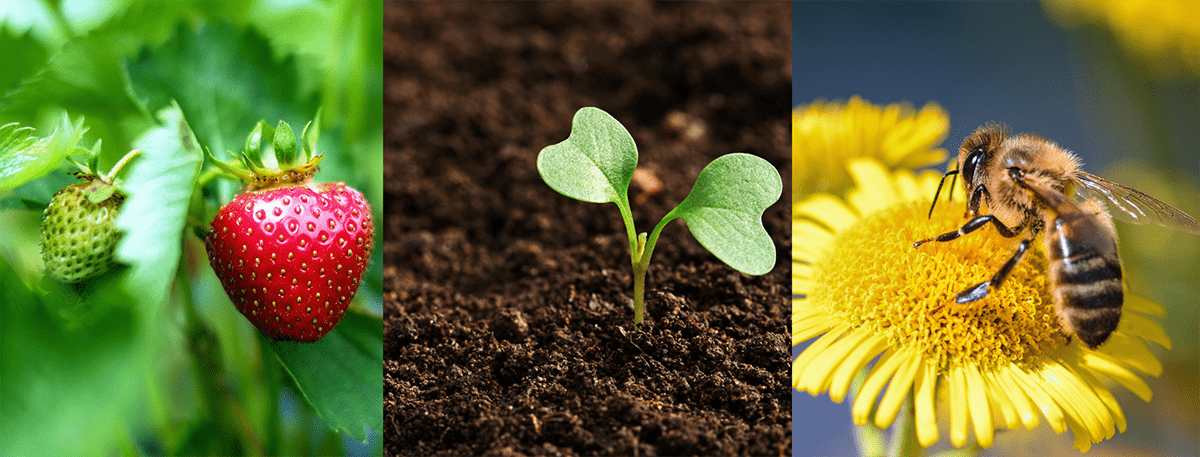When CEAT was launched in 2018, our goal was to build – in Canberra and its surrounding region – a globally-connected agri-tech innovation ecosystem where world-class research and technology is targeted to agricultural challenges, independent of traditional disciplinary boundaries. Note the geographic range this encompasses – it goes from local to regional to national to global. Over the last month, I have been struck by how each are linked, and in fact how success locally and regionally are often dependent on links to national/international networks, and vice-versa.
An example of the local-global link is how Dr Richard Stirzaker (Principal Research Scientist at CSIRO Food Systems and Global Change) has applied his knowledge of soil, plant and irrigation science – honed through years of trials in the back yard of his O’Connor suburban block – to address challenges facing small scale farmers in developing countries. Richard was kind enough to give me a tour through his ‘backyard laboratory’ last week, something you can experience by watching this episode of ABC’s Gardening Australia when Costa Georgiadis visited Richard’s home. Working with others at the Virtual Irrigation Academy (VIA), Richard has designed, manufactured and begun selling simple and cheap technology (e.g. their Chameleon Card System) that enables small land holders to measure soil water levels. They also manufacture devices that measure what is dissolved in water (e.g. nitrate, salts), noting that for farmers in Africa, optimising use of nitrate fertilizers is economically important. With web connectivity, VIA will be collecting valuable data that will in itself have extraordinary value for development of new products and strategies to improve water and nutrient use.
Regional links are also important. For CEAT, there have been a number of examples of that in the past month. One was the 17th November launch at ANU of the Food in the Capital event – an initiative of Regional Development Australia – that is exploring and showcasing innovations in rural and urban farming, as well as food transport logistics and social ventures. The event featured presentations on vertical farming by three emerging companies: Invertigro, Farmwall and Modular Farms Australia.
Another example was the release of guidelines for the Australian Government’s Resilience Research and Adoption Program that will establish eight regionally-focused Drought Resilience Adoption and Innovation Hubs. As I noted in September, there are exciting opportunities for ANU and CSIRO – in partnership with other regionally-based organisations and innovation ecosystems – to contribute to the formation of a Hub in our region. Over the coming month, CEAT will work closely with regional partners to develop a proposal that uses the skills and infrastructure of the ANU-CSIRO Precinct to address drought-related changes in the Southern NSW/ACT region.
Linking with international partners is also important for increasing trade, establishing new R&D collaborations, and to increase investment in Australia’s emerging agri-tech ecosystem. Last week, I participated in an Argentina-Australia agri-tech webinar organised by Austrade that explored opportunities to boost business between Argentine and Australian companies. I talked about how the interdisciplinary capabilities of Australia’s universities are being used to address challenges facing the agri-sector. Also speaking at the event was Matthew Pryor from the Australian Agritech Association and Duncan Ferguson from CSIRO. Matthew provided a great overview of the Australian agricultural sector and how innovation was helping create new export opportunities, while Duncan outlined how CSIRO is helping drive the formation of start ups in areas such as plant-based meat alternatives and seaweed additions to animal feeds that reduce methane production. The event also featured two presentations that provided great examples of where regionally-based Australian organisations are working with partners in Argentina to develop new agri-tech products. Michael Thomson (Central Queensland University), talked about a collaboration with the Argentine INTA that uses digital technologies to monitor growth/health-status of livestock, while Nicolás Martelli from ZoomAgri outlined a collaboration with the Australian company, Intergrain, to use sensor technology and software as part of a purity screen during grain handling and malting. You can watch all of these talks here.
The above events nicely highlight the importance of building networks that start locally/regionally and scale up to national and global levels. CEAT looks forward to doing its part in establishing such networks as it helps build a connected agri-tech innovation ecosystem.
For information and updates on CEAT activities, programs and other initiatives, please subscribe to our newsletter to receive a monthly update directly to your email. Thank you.
Owen Atkin, Director, CEAT.
